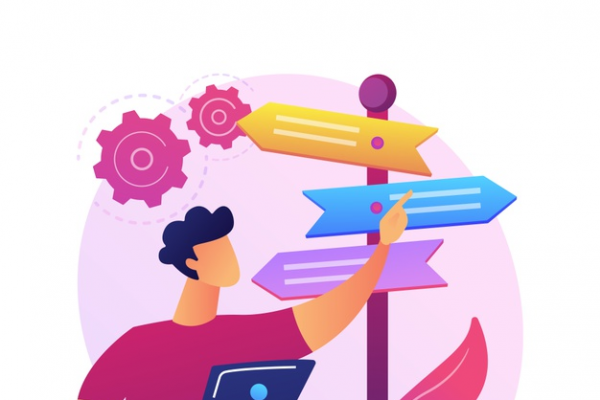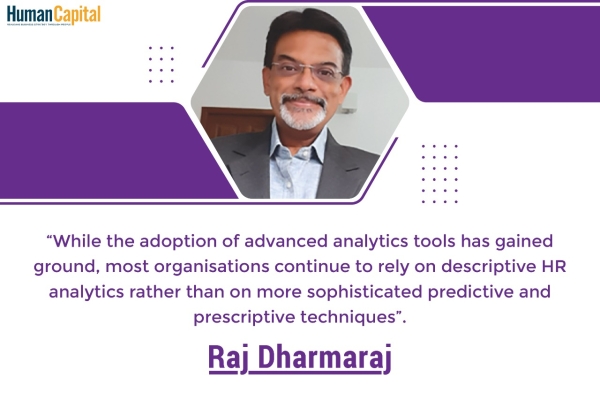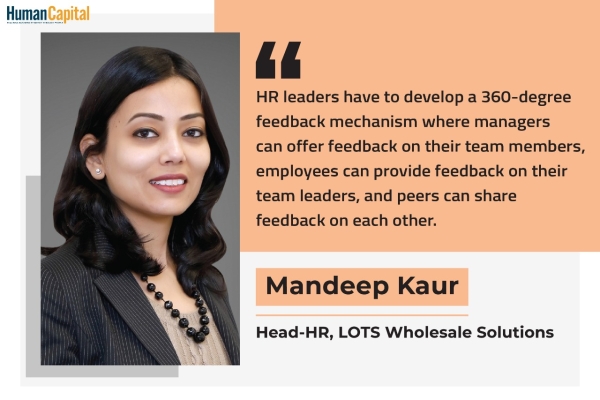It is now time to look beyond bottlenecks and prioritise talent data.
Most organisations know a lot about their employees but very little about their talent base. Legal and government regulations have consistently exacted organisations to maintain personnel/employee data in mint condition, and the HR Information Systems (HRIS) covering such statutory needs have evolved significantly.
Are organisations able to access employee numbers sliced and diced by geography, experience levels or tenure? Yes, yes and yes. However, it becomes tricky when it is required to dive one layer deeper; for instance, employee experience across competencies or skills, roles performed across tenure and even some basic productivity measures around work hours and effort, especially for knowledge and service industries. As if this were not complicated enough, the pandemic necessitates more real-time information such as an employee’s current location during remote working, health checks and vaccination-related statuses, work hours and availability, etc. Most organisations are yet to architect these into their HRIS to gain real-time visibility.
On the flip side, compliance matters have made organisations walk around employee data like it were eggshells. Employee and individual data privacy-related regulations – such as SPDI-related rules in the IT Act in India, the California Consumer Privacy Act (CCPA) and other equivalent state laws in the US and the General Data Protection Regulation (GDPR) (the instrument invoked to politely deny any data requests) in the EU – have made employee data collection, retention, and retrieval more complicated than they should be. However, none of these takes away the ability of an employer to be empowered with the kind of in-depth data discussed earlier.
The Problem
Is the gap in data availability a result of employee unwillingness to share data? A recent study by Alight, although very specific to personal health information, says that most employees (70%) are willing to share pertinent data about themselves, provided there is something in it for them. For example, if sharing work hours and flexible-hour patterns would help the organisation identify the best-suited project, the majority of employees, especially Millennials, would share this information willingly. A closer look at the demographics of this study shows that 79% of Millennials will share information if they have any takeaway, as against a Gen X population of respondents who were much less enthusiastic about doing so.
So, it is safe to conclude that employees are not impediments to data availability if purpose and value are established.
With all probable suspects off the list, it is time to admit hard facts and look intrinsically. Most organisations deprioritise talent data because:
1. It is hard to quantify ROI on a talent information system that is robust and can get the job done.
2. A talent information system needs to be very contextual, making the shopping process difficult, so the ideal way is the hard way, which is to build from scratch.
3. The data source is not as straightforward as the ones that come from, say, an employment application.
Talent data often resides in the confines of organic discussions between managers and team members. Sometimes, it masquerades as “value adds” like appreciation letters, safely hidden as a newly acquired on-the-job skill or in other such treasure chests.
What We Really Need
It is now time to look beyond these bottlenecks and prioritise talent data. The post-pandemic boom is expected to change the way businesses have operated. For instance, in the shipping industry — the roles of Crew Members are being reimagined to ensure a lean team onboard. Technology solutions will necessarily be leveraged to automate and remotely manage vessels to the extent possible.
In such a context, a talent database consisting of primary, secondary and further breakdowns of skills across Marine Engineers and Crew Members working with a shipping company will be like gold dust for enabling accurate decision-making on further training and role reimagination. Moreover, drilling down of aspirations (short-, mid-, and long-term) will help the shipping company determine which mariner will be more welcoming of a shore job now versus later.
The same example could be extended to an organisation on the cusp of technology or business transformation. If a retail company can query into a talent database and find out who among their staff have past experience as a POS end user, they would be able to fill a POS QA/ Testing position in their reimagined technology organisation, not with just “any” Tester but one with contextual knowledge about how stores operate. These subtle differences are often behind creating great ideas, great products, great services, and great workplaces.
Complete, correct and current talent data that is a derivative of key input from the following can help reduce training cost, create excellent employee experience (EX), arrest talent flight, and avoid superfluous hiring cost:
1. Structured and unstructured skill acquisition
2. Individual strengths and weak spots
3. Layers of competencies recorded in a quantifiable fashion coming from the employee and manager
4. One-to-one discussion with mentor capturing realistic short-term/mid-term aspirations
With AI and automation tools like simple employee experience bots, collecting and capturing such data should be getting simpler and more convenient than using cumbersome forms and large Excel tools. Depending on where an organisation is in their journey to become a modern and connected workplace, a lot of organic data could come from communication and collaboration tools.
The first step towards setting the house in order and having control of talent data is selecting and engaging with either an internal IT that is well equipped or a technology partner that understands the context of the business and has the depth of experience and wherewithal to build a talent data solution that the organisation and employees need.
Conclusion
In most cases, the pandemic forced organisations into embracing remote working. Businesses are not shy anymore to try creative resourcing models. Traditional HR information systems that are inadequate to handle employee talent data will run aground if freelancers and gig workers are welcomed. And this makes the case stronger for organisations to consider moving to intelligent talent information systems and take pride in truly knowing their people.
.jpg)
Do you think hybrid work arrangements would be a common feature of the workplaces going forward?
Trending
-
SBI General Insurance Launches Digital Health Campaign
-
CredR Rolls Out 'Life Happens' Leave For Its Employees
-
Meesho Announces 30-Week Gender-Neutral Parental Leave Policy
-
Microsoft Unveils Tech Resilience Curriculum To Foster An Inclusive Future
-
60% Indian Professionals Looking For Job Change Due To COVID: Survey
-
SpringPeople And Siemens Collaborate For Digital Transformation Push
-
86% Professionals Believe Hybrid Work Is Essential For Work Life Balance: Report
-
Almost 1 In Every 3 People's Personal Life Affected Due To Work Stress
-
Meesho Rolls Out Reset And Recharge Policy For Employees
-
80% Of Talent Leaders & Academics Say Pandemic Changed Skill Needs For Youth: Report
-
Hero Electric Rolls Out 'Hero Care' Program For Employees
-
Human Capital In Collaboration With ASSOCHAM Hosts Virtual Conference
-
IKEA India, Tata STRIVE Collaborate To Create Employability And Entrepreneurship Opportunities
-
SAP India, Microsoft Launch Tech Skilling Program for Young Women
-
DXC Technology, NASSCOM Collaborate For Employability Skills Program
-
Lenskart To Hire Over 2000 Employees Across India By 2022
-
Mindtree Launches Learn-and-Earn Program
-
Tata AIA Extends 'Raksha Ka Teeka' To Its Employees
-
Swadesh Behera Is The New CPO Of Titan
-
NetConnect Global Plans To Recruit 5000 Tech Professionals In India
-
Hubhopper Plans To Hire 60% Of Indian Podcasters By 2022
-
Corporate India Needs More Women In Leadership Roles: Report
-
Aon to Invest $30 Million and Create 10,000 Apprenticeships by 2030
-
Tech Mahindra Launches ‘Gift a Career’ Initiative for Upskilling of Youth
-
40% Women Prefer Flexible Working Options in Post-COVID World: Survey
-
3 out of 4 companies believe they can effectively hire employees virtually: Report
-
Vodafone , CGI and NASSCOM Foundation launch digital skills platform
-
Odisha: Bank, postal employees to deliver cash for elderly, differently-abled persons
-
Skill India launches AI-based digital platform for "Skilled Workforce"
-
Hiring activity declines 6.73% in first quarter: Survey
-
70% startups impacted by COVID-19 pandemic
-
Bajaj Allianz Life ropes in Santanu Banerjee as CHRO
-
Over 70 Percent MSMEs look at cutting jobs to sustain businesses
-
93 Per Cent employees stressed about returning to office post-lockdown
-
Johnson & Johnson India announces family benefits for same gender partners
-
Indian firms turning friendly towards working mothers
-
Welspun India names Rajendra Mehta as new CHRO
-
Wipro partners with NASSCOM to launch Future Skills platform



Human Capital is niche media organisation for HR and Corporate. Our aim is to create an outstanding user experience for all our clients, readers, employers and employees through inspiring, industry-leading content pieces in the form of case studies, analysis, expert reports, authored articles and blogs. We cover topics such as talent acquisition, learning and development, diversity and inclusion, leadership, compensation, recruitment and many more.
Subscribe Now












































Comment